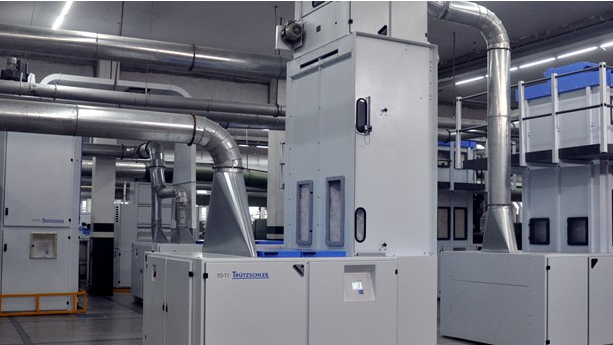Digital Printing: Set To Transform The Global Textile Market
From production of fibres and weaving them into fabric, there are several processes and elements involved in textile industry. Digital printing is one of the processes that directly prints designs on the fabric. The current global output of digitally printed textile is growing at a steady annual rate of 25 per cent, according to Textiles Intelligence. While the worldwide share of digitally printed textile is mere 2 per cent currently, the mounting pressure of shipping products in short duration is expected to boost the share in global textile printing to 5 per cent by 2017.
The practical approach of digital textile printing has encouraged many designers and manufacturers to choose it over other forms of printing. Though digital printing has experienced sluggish growth in comparison to traditional printing, it is gradually catching up with the changing dimensions of the textile industry.
Global push
A market study by Smithers Pira projected the digital textile printing market to grow at 20.1 per cent annually through 2019. Experts have also predicted that global digital textile printing production will be around 1.6 billion square metres annually by 2019. As many as 650 million square metres of fabric was digitally printed until the second quarter of 2014.
The reasons for a steady growth of digital textile printing are numerous. Digital printing is not only a higher creative form of textile printing; it also provides greater design flexibility, compared to screen printing. Designers prefer digital printing for small prints, as it is more cost efficient. One of the biggest plus points of digital printing is its eco-friendly form with lesser physical inventory levels leaving smaller amount of carbon footprints.
Digital printing involves direct printing on fabrics with printers, which saves almost 95 per cent of water and energy usage is reduced by 75 per cent, leading to minimum textile waste. Designers like Mary Katrantzou, Alexander McQueen and Basso & Brooke have often used digital textile printing in their designs. Moreover, manufacturers that rely on digital textile printing easily adapt to swift changes in global trends in comparison to people involved in other forms of printing.
These factors support the rising graph of digital printing in global textile sector. Nevertheless, the future growth of digital textile printing widely depends on deeper penetration of digital printing into commercial print production. The machine manufacturers also need to develop technologically advanced production printers in order to survive competition from conventional forms of textile printing machinery.
Other than the competition from traditional printing methods, another technical hitch was the print speed of digital printing, something which has been taken care of. From adding more heads in a row to increase the firing frequency or increasing the number of nozzles, modern digital textile printing machines are advanced and offer great printing speed

Leave a Reply
You must be logged in to post a comment.